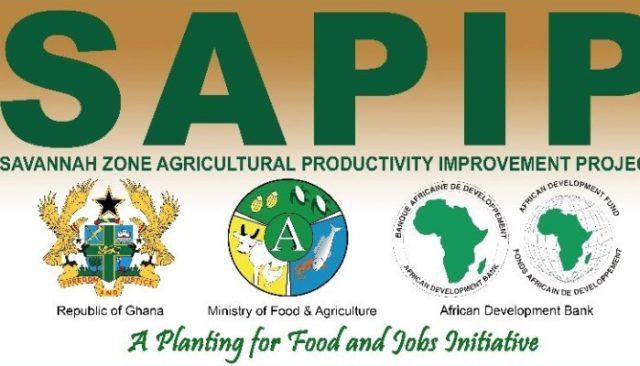The Savannah zone Agricultural Productivity Improvement Project (SAPIP) has improved the livelihood of about 444,341 individuals and households in the Northern sector over the implementation period.
The beneficiaries were trained in bookkeeping, accounting practices, market access facilitation, and linkages to enhance the creation and strengthening of agribusiness income.
With an investment value of US$19,498,496 in grains, such as maize, soybean and rice, the production capacity of farmers has increased significantly.
The project, which was designed to transform the agricultural value chain for food and security, and job & wealth creation within the Savannah zone, also supported about 250,000 farmers nationwide through the input subsidy programme of the PFJ, out of which 50 percent of the beneficiaries were women.
SAPIP, in partnership with Technologies for African Agricultural Transformation in The Savannahs (TTATS-S), also developed a common agriculture policy (CAP) and provided a commercial farmer out-grower scheme and rice valleys to promote farming, leading to the creation of about 43,004 jobs.
Additionally, over 2,989 women and their families and 100 schools also benefitted from the intervention.
Monitoring and Evaluation Specialist of SAPIP, Peter Osei-Tutu, indicated that before the inception of the project, the beneficiaries were challenged with inadequate funds for the rehabilitation of the seed centres, a limited number of fertiliser spreaders & combine harvesters, and dry spells at the critical times of the crop. But the project has helped to rehabilitate the Tamale seed centre with ten fertiliser spreaders and ten combine harvesters.
He added that SAPIP helped to improve market access by strengthening the capacity to improve grain quality and empowered organisational off-takers, leading to prompt off-load of farmers’ produce at good prices.
“It has helped them to generate some revenue to improve the family and the farming activities. Our engagement with commercial and rural banks also facilitated the access to finance to expand their operations,” he said.
Another component of the project, which focused on the feeder road network infrastructure to enable easy access of farm produces to the market, impacted about seven districts, namely: Savelugu Municipal, Nanton, Tolon and Kumbunguin in the Northern Region; West Gonja and West Mamprusi in the North East Region; and Builsa South District in the Upper East Region.
These construction works served a total of 15,840 residents in 15 communities. An extra 10,148 hectares of land was developed to support the production of maize and soybean as well as lowland rice.
In view of that, about 543,803mt of grains – consisting of 151,438mt of rice, 352,621mt of maize, 39,744mt of soybean, and 22,000mt of vegetables – were produced during the project period.
Mr. Osei-Tutu further noted that the investment made in infrastructure ensured that the seed industry has the state-of-the-art processing and laboratory facilities to improve the seed quality. Also, farmers had access to year-round irrigation to increase production, with accessible feeder roads to facilitate marketing.
He stressed that the interventions have led to improving food and nutritional security, with rural farmers generating more income.
Another significant outcome of the project is that it delivered drought-tolerant hybrids for the intensification of agriculture to boost production.


















